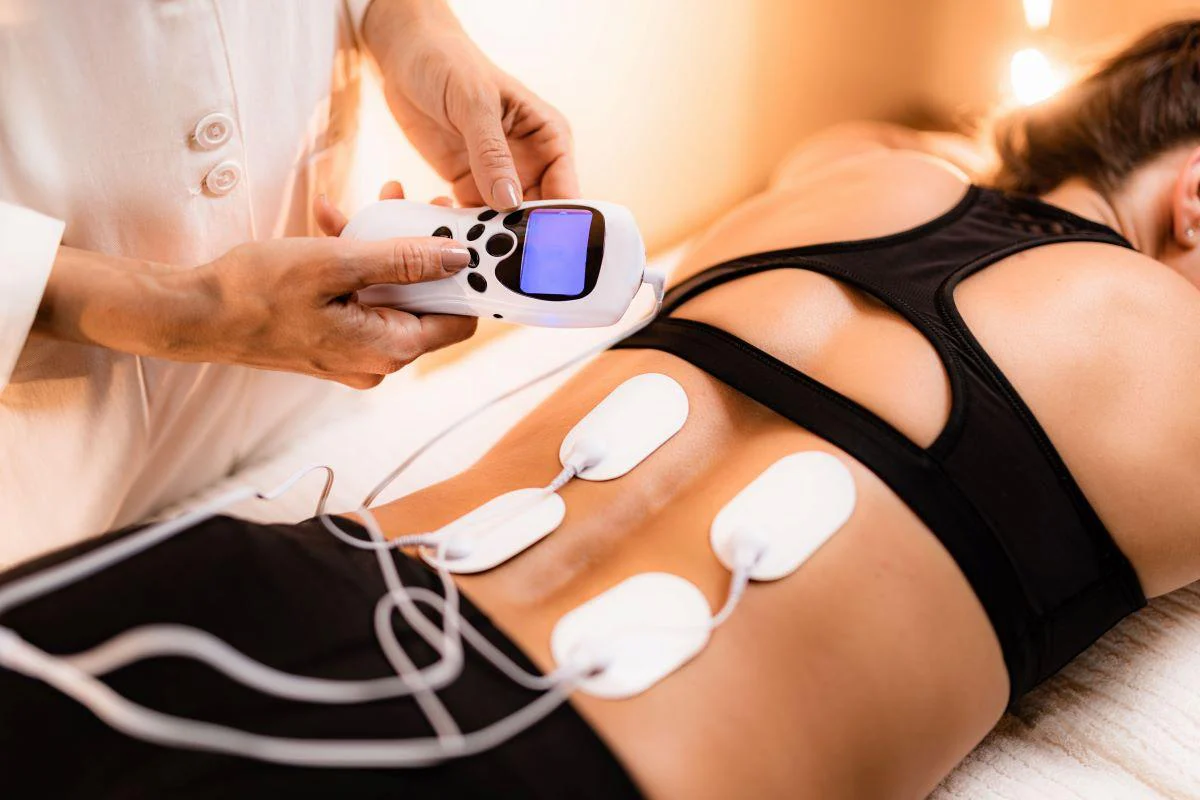
Electrical stimulation is central to the process. TENS delivers low-voltage electrical pulses to targeted areas through surface electrodes. Electrodes are placed directly over painful regions. The impulses stimulate underlying nerve fibers. These pulses do not contract muscles like other electrotherapies. Instead, they interrupt pain signals before reaching the brain. Each session varies in frequency and intensity. Settings are adjusted based on treatment goals.
Pulses may block pain signals from reaching the central nervous system
The goal is to alter perception. Pulses may block pain signals from reaching the central nervous system. This occurs through gate control theory. The spine limits incoming signals when competing input arrives. Sensory nerves carry electrical signals faster than pain fibers. When TENS stimulates those fibers, pain transmission is disrupted. Patients describe a tingling or buzzing sensation. This sensation is usually comfortable and noninvasive.
Some protocols stimulate the release of endorphins in response to longer sessions
Chemical responses also occur. Some protocols stimulate the release of endorphins in response to longer sessions. These natural opioids reduce pain sensitivity. Low-frequency, high-intensity settings promote this effect. The result may last beyond the treatment duration. Endorphin pathways affect both acute and chronic conditions. This mechanism provides additional relief after the device is removed.
Chronic musculoskeletal conditions often benefit from regular TENS use
Long-term issues require ongoing support. Chronic musculoskeletal conditions often benefit from regular TENS use. These include back pain, neck stiffness, and joint inflammation. Arthritis patients often report reduced morning discomfort. Myofascial pain syndrome may also respond to TENS. Unlike medication, it doesn’t rely on systemic absorption. Its localized effect allows repeat use without organ strain.
TENS therapy is sometimes used after surgery to reduce reliance on medication
Postoperative care includes stimulation. TENS therapy is sometimes used after surgery to reduce reliance on medication. It may decrease opioid need during early recovery. Pain relief improves participation in physical therapy. Early mobility helps prevent complications like stiffness or clotting. Surgeons may clear TENS for use near sutures. Proper timing enhances effectiveness without disturbing healing tissue.
Each treatment session is customized according to the area and nature of pain
Application is never one-size-fits-all. Each treatment session is customized according to the area and nature of pain. Therapists adjust frequency, pulse width, and intensity. Acute injuries may need high-frequency, short-duration bursts. Chronic pain responds better to slower rhythms. Electrode placement varies with nerve distribution. Mapping techniques guide exact targeting. Trial and feedback determine the best settings.
Patients with pacemakers or epilepsy may be advised to avoid TENS
Contraindications must be respected. Patients with pacemakers or epilepsy may be advised to avoid TENS. Electrical interference could affect cardiac rhythm devices. Seizure thresholds might change in sensitive individuals. Pregnancy is another consideration, especially in the abdomen or pelvis. Skin conditions at electrode sites may worsen. Medical clearance ensures safe usage. Each device includes clear guidance for exclusion criteria.
Portable home-use TENS units allow patients to manage pain independently
Technology extends care beyond clinics. Portable home-use TENS units allow patients to manage pain independently. These battery-operated devices are lightweight and discreet. Prescribed programs are preloaded or customizable. Patients receive instruction from physiotherapists before starting. Scheduled use supports consistent relief between appointments. Device misuse can reduce effectiveness or cause skin irritation. Daily logs help monitor patterns and outcomes.
Some patients build tolerance and require changes in frequency or pulse pattern
Therapeutic adaptation can occur. Some patients build tolerance and require changes in frequency or pulse pattern. Regular adjustment maintains therapeutic impact. Alternating modes every few sessions helps sustain results. Combination with exercise enhances circulation and recovery. TENS may be integrated with manual therapy for added effect. Multi-modal approaches tend to yield better long-term progress.
Pain relief is temporary, but consistent use contributes to better function and mobility
Effect duration varies by condition. Pain relief is temporary, but consistent use contributes to better function and mobility. TENS does not cure the source of pain. It supports movement while healing occurs. Reduced pain encourages fuller participation in rehab. Increased activity preserves strength and range. Regular reassessment ensures continued relevance. Goals evolve as recovery advances.
